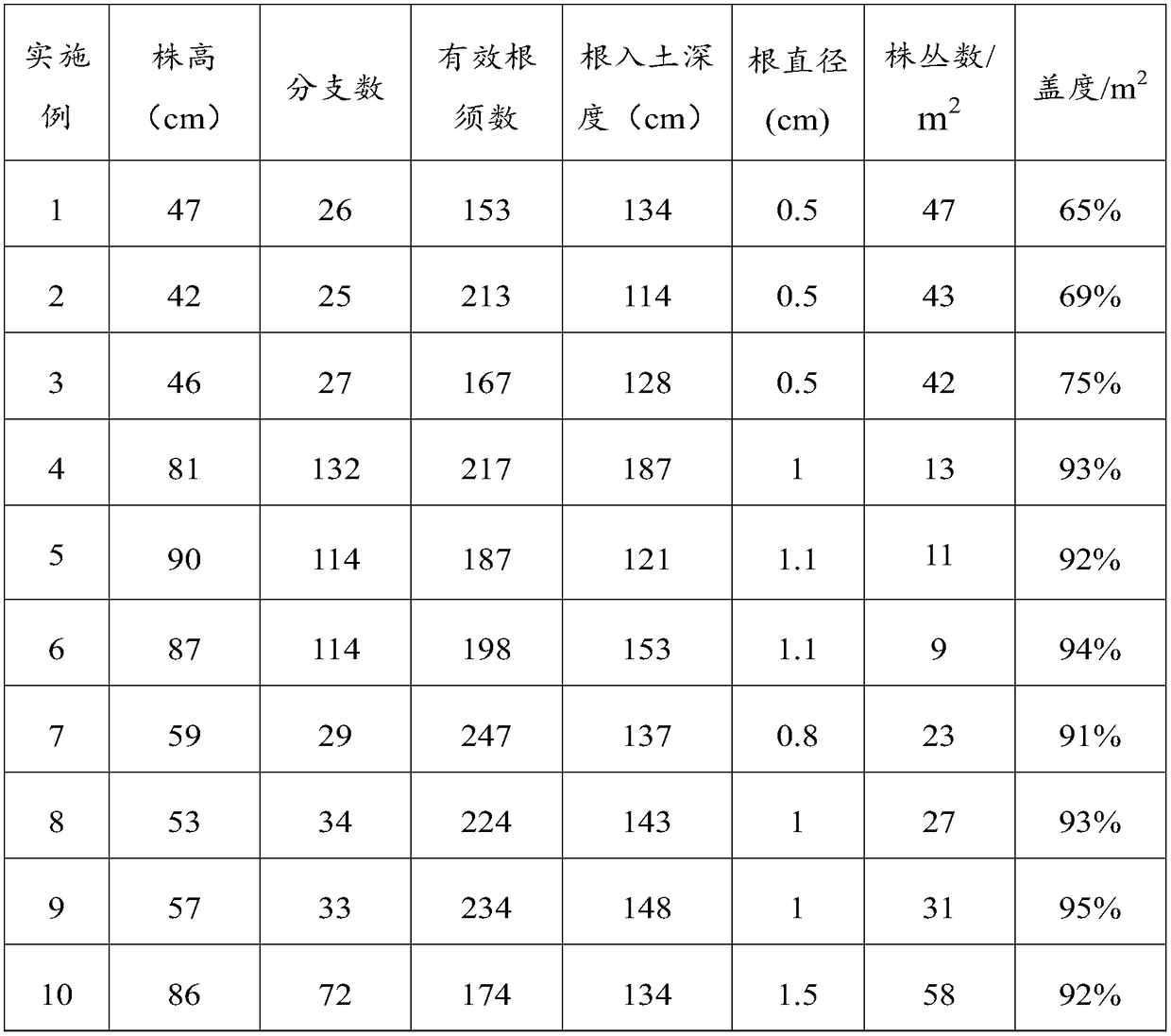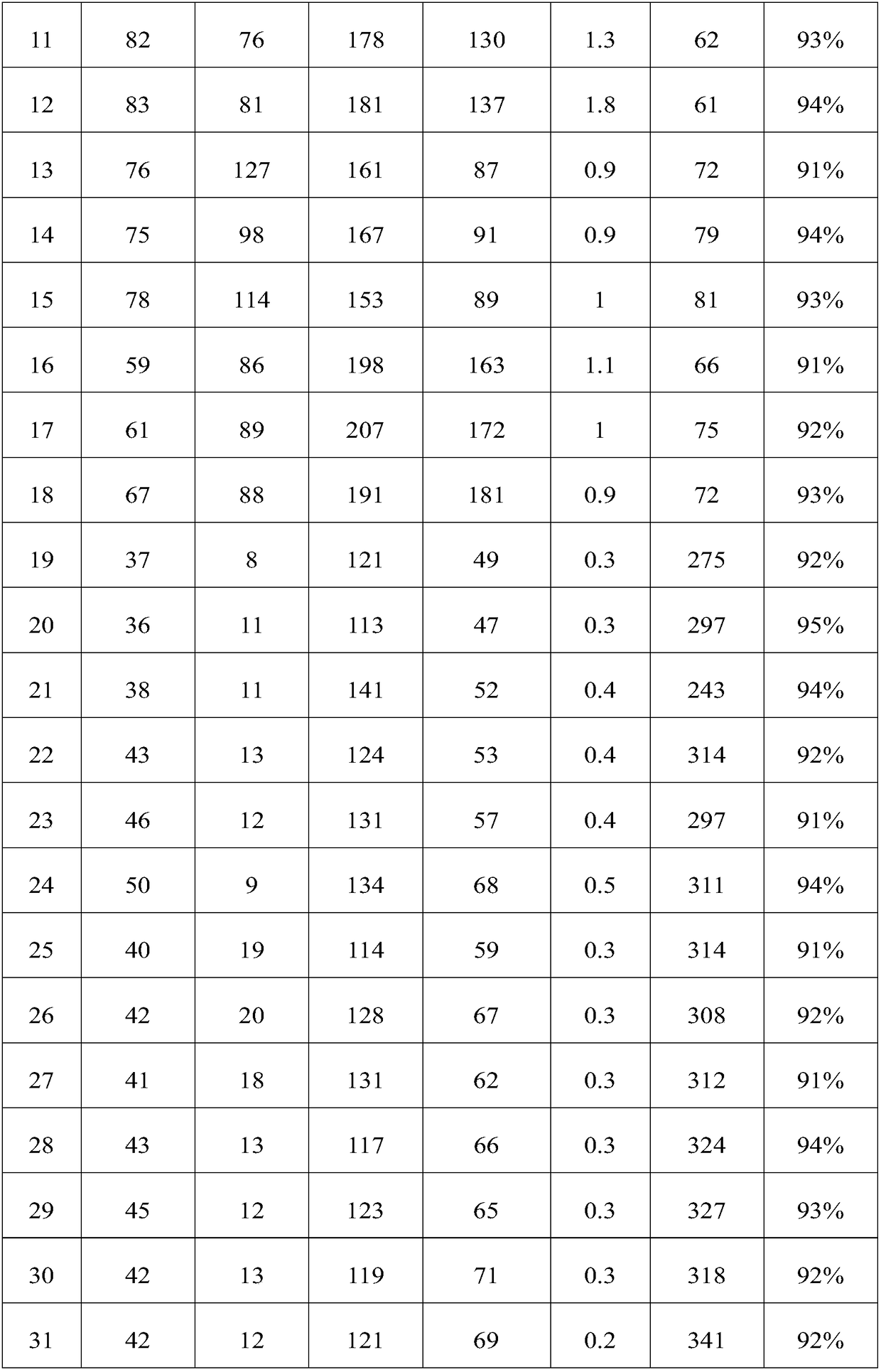Method for cultivating plants in flat sandy land used for sandy land amelioration and sandy land amelioration method
A sandy land and plant technology, applied in the fields of botanical equipment and methods, plant cultivation, leguminous plant cultivation, etc., can solve problems such as difficulty in restoring sandy land, achieve long-lasting treatment effects, promote effective treatment, and be difficult to re-sandification. Effect
- Summary
- Abstract
- Description
- Claims
- Application Information
AI Technical Summary
Problems solved by technology
Method used
Image
Examples
Embodiment 1
[0027] Embodiments of the present invention provide a method for sowing plants in flat sandy land for controlling sandy land, which includes the following steps:
[0028] Reeds cut to 50-60cm are planted and sand barriers are set up in a ditch with a depth of 28-32cm. The number of layers of sand barriers is 2 layers, and the size of the sand barriers is 2m×2m=4m. 2 square. Apply basal fertilizer to the area to be sown. The basal fertilizer applied is diamine hydrogen phosphate and urea with a mass ratio of 2.8:1, and the application rate per mu is 13kg. Irrigation devices were installed in the sowing area, and the number of micro-spray belts of the irrigation device was set at 10 per 16 mu, and other settings were carried out as described in S3.
[0029] After the above measures are completed, planting will be carried out from early June to mid-August. The sowing rate is 4kg per mu, the sowing depth is 2-4cm, and the row spacing is 35cm. The mass ratio of seabuckthorn and w...
Embodiment 2
[0031] Embodiments of the present invention provide a method for sowing plants in flat sandy land for controlling sandy land, which includes the following steps:
[0032] Reeds cut to 50-60cm are planted in a ditch with a depth of 28-32cm to set up a sand barrier. The number of sand barriers is 3 layers, and the size of the sand barrier is 1.5m×1.5m=2.25m 2 square. Apply base fertilizer to the area to be sown. The applied base fertilizer is diamine hydrogen phosphate and urea with a mass ratio of 3.2:1, and the application rate per mu is 15kg. Irrigation devices were installed in the sowing area, and the number of micro-spray belts of the irrigation device was 14 per 16 mu, and other settings were carried out as described in S3.
[0033] After the above measures are completed, planting will be carried out from early June to mid-August. The sowing rate is 6kg per mu, the sowing depth is 2-4cm, and the row spacing is 30cm. The mass ratio of seabuckthorn and wheatgrass is 1.2:0...
Embodiment 3
[0035] Embodiments of the present invention provide a method for sowing plants in flat sandy land for controlling sandy land, which includes the following steps:
[0036] Reeds cut to 50-60cm are planted in a ditch with a depth of 28-32cm to set up a sand barrier. 2 square. Apply basal fertilizer to the area to be sown. The basal fertilizer applied is diamine hydrogen phosphate and urea with a mass ratio of 3:1, and the application rate per mu is 14kg. Irrigation devices were installed in the sowing area, and the number of micro-spray belts of the irrigation device was 12 per 16 mu, and other settings were carried out as described in S3.
[0037] After the above measures are completed, planting will be carried out from early June to mid-August. The sowing rate is 5kg per mu, the sowing depth is 2-4cm, and the row spacing is 32cm. The mass ratio of seabuckthorn and ice grass is 1:1:0.5:1.
PUM
 Login to View More
Login to View More Abstract
Description
Claims
Application Information
 Login to View More
Login to View More - R&D
- Intellectual Property
- Life Sciences
- Materials
- Tech Scout
- Unparalleled Data Quality
- Higher Quality Content
- 60% Fewer Hallucinations
Browse by: Latest US Patents, China's latest patents, Technical Efficacy Thesaurus, Application Domain, Technology Topic, Popular Technical Reports.
© 2025 PatSnap. All rights reserved.Legal|Privacy policy|Modern Slavery Act Transparency Statement|Sitemap|About US| Contact US: help@patsnap.com



